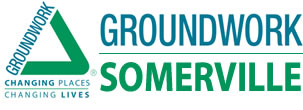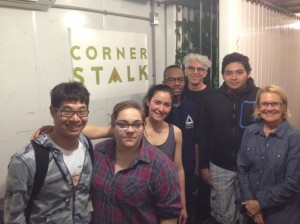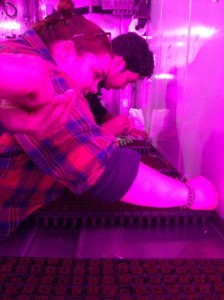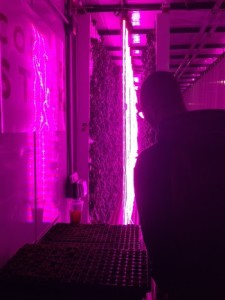Urban Farming: A Hydroponic Story
What is the hardest part about growing food in the city? Finding space to grow is a pertinent problem but navigating densely populated neighborhoods to find a space that isn’t contaminated with high levels of lead in the soil is the main concern. Farmers, community gardeners, and backyard garden enthusiasts have done a great job carving out growing spaces by using vertical planting techniques and bringing in non-contaminated soils to use in raised garden beds. Amidst these solutions to the challenges of urban growing, a couple in Boston are spearheading a movement towards hydroponic farming.
Recently, the Green Team here at Groundwork went on a mission to explore Boston’s most tech savvy farming option that solves the space and contamination issue in one streamlined design, while providing a reliable source of income for one couple over at Newmarket Square, Boston. Corner Stalk Farm is a “controlled environment agriculture farm that offers Boston area consumers fresh, locally grown leafy greens.” All of the greens grown at Corner Stalk Farm are produced in a recycled/repurposed shipping container. The containers themselves are called Freight Farms, which are energy efficient hydroponic systems that use 10 gallons of water. That is, the same 10 gallons of water, forever. The basil plants in this particular container were stacked vertically in plant bookshelves facing strings of red and blue colored LED lights. The colors were chosen because plants absorb the most energy for chlorophyll production in the blue/violet wavelength spectrum, in turn reflecting green out into the world! In addition to the cool interior layout and design of the farm, Connie and Shawn Cooney are able to control the farm’s internal temperature and monitor pH levels and growth periods of their greens straight from their smart phones!
Green Teamers had a chance to explore the farm space, taste the basil, and seed more trays for the next growing cycle. They were impressed with the seemingly simple process of growing in the freight, as almost every step is automated, aside from seeding and harvesting. Although Connie and Shawn still dedicate time to monitoring their plants in person and are still learning the nuances of each of their freight farms, they speak of one day being able to trust their phones to tell them of any irregularities in the conditions on the farm. Who knew, 50 years ago, that something as knowledge based, weather dependent and location specific as farming could be packaged in an automated box and shipped anywhere in the U.S.? Certainly not us! Either way, here’s to progressive visions of food security and the pioneers that are paving the way!



